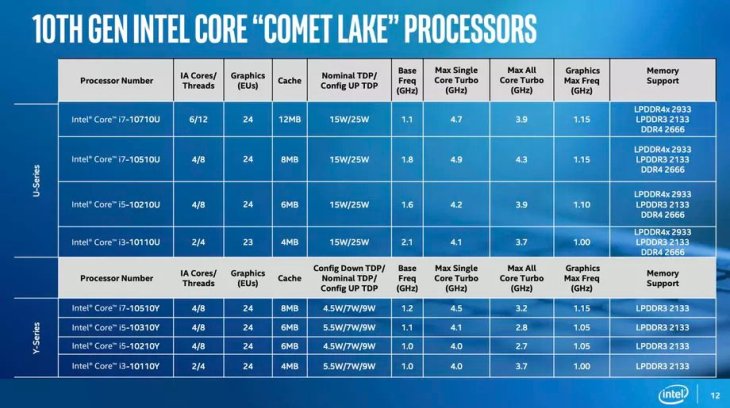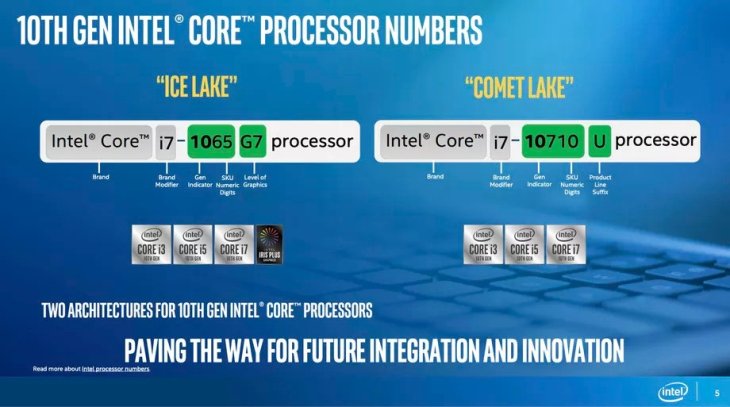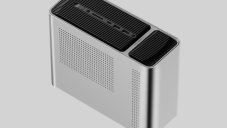Intel Introduced Eight New 10th Gen Comet Lake Processors, Confuse Everyone With Their Names
Har Devarukhkar - Aug 23, 2019

Intel has recently introduced eight new 10th Gen Comet Lake chips which would be released this holiday season
- Intel Announced 11th-Gen Rocket Lake Processors, Rivaling AMD Ryzen Chips
- Intel India And Indian Scientists Are Aiming To Use AI Solutions To Cope With COVID-19
- This Intel Chip Helps Electronic Noses Detect Weapons, Explosives, And Other Hazardous Chemicals
Intel has recently dropped the list of the latest processors of the 10th generation. The revelation focuses mainly on the Comet Lake CPUs, which ultimately raise the total number of members of U- and Y-series CPUs for us to decipher.
All of these newly introduced processors (eight of them) use the 14nm process of Intel instead of the 10nm process of Ice Lake. However, do not let it fool you that they are bad for not using the Ice Lake. To clarify this, let’s take the first hexacore processor in the U-series, the Intel Core i7-10710U, into consideration, for example: compared to some of the other processors of Ice Lake, this new processor has 12 threads and its maximum clock speed is higher.

Nevertheless, these new 14nm processors will, in fact, be short of some of the advantages that the 10nm processors have. All in all, they would be somewhat less efficient, and you will not be able to see an excellent battery life in machines with these chips in contrast to those with Ice Lake processors.
Moreover, none of these eight processors would be equipped with the impressive Gen11 integrated graphics of Intel, which would come in handy when playing games at the resolution of 1080p. Instead, they would be using the integrated graphics’ earlier version, which is shown already pretty clearly by the model names. As a result, if you are not using a laptop with Nvidia or AMD’s dedicated graphics for gaming, these chips of the 10th generation will not be able to handle the job well on their own. Still, it more or less depends on the games you play.
On the other hand, it looks like Intel is not even trying to help users to tell these 10th Gen chips apart. The only way to actually distinguish them is by the model names with a little bit of the knowledge for these processors.
In the case of Comet Lake chips, users can tell them apart by the letter “Y” and “U” in the model names. Interestingly, Ice Lake chips also belong to the Y- and U-series lineup, but these letters just do not appear in their names. In place of that, Intel uses the combination of “G-number” attached to the end of the names, which serves two purposes: to differentiate between different models and to express that they have the new Iris Plus graphics.

Ryan Smith from AnandTech has also tweeted about how the advanced U-series processors will back fast memory of LPDDR4x in laptops, which would likely outrun the DDR3 from Apple and the like. At the same time, Intel has also gained praise for upholding the same consistency of support for Wi-Fi 6 and Thunderbolt 3 in this new Y- and U-series processors compared to other chips in the 10th generation lineup.
In addition, the firm stated that a couple of these chips would be installed in machines with a sticker reading “Project Athena,” which acts as an insurance that they have been tested to be capable of running for nine straight hours.
Now, the only question left is where to find these processors. Intel has confirmed that these new chips would be installed in machines by the time you take a break for the holiday. And as a matter of fact, because these are less efficient than the 10nm processors, they would be taking a spot in the little less pricey machines, which include 2-in-1 laptops, Ultrabooks and other slim personal computers with the potential to expand to future MacBook and Surface products.
Featured Stories

ICT News - Dec 25, 2025
The Visibility Concentration Effect: Why Half the Web Isn’t Qualified Anymore

ICT News - Jul 05, 2025
Windows 11 is Now the Most Popular Desktop OS in the World

ICT News - Jul 02, 2025
All About Florida’s Alligator Alcatraz: A Smart Move for Immigration Control

ICT News - Jun 25, 2025
AI Intimidation Tactics: CEOs Turn Flawed Technology Into Employee Fear Machine

ICT News - Jun 24, 2025
Tesla Robotaxi Finally Hits the Streets: $4.20 Rides That'll Make You Hold Your...

ICT News - Jun 24, 2025
World's First Flying Humanoid Robot Takes Flight

ICT News - Jun 24, 2025
When Closed Source Met Open Source: Bill Gates Finally Meets Linus Torvalds After...

Gadgets - Jun 23, 2025
COLORFUL SMART 900 AI Mini PC: Compact Power for Content Creation

ICT News - Jun 22, 2025
Neuralink Telepathy Chip Enables Quadriplegic Rob Greiner to Control Games with...

ICT News - Jun 20, 2025
Comments
Sort by Newest | Popular